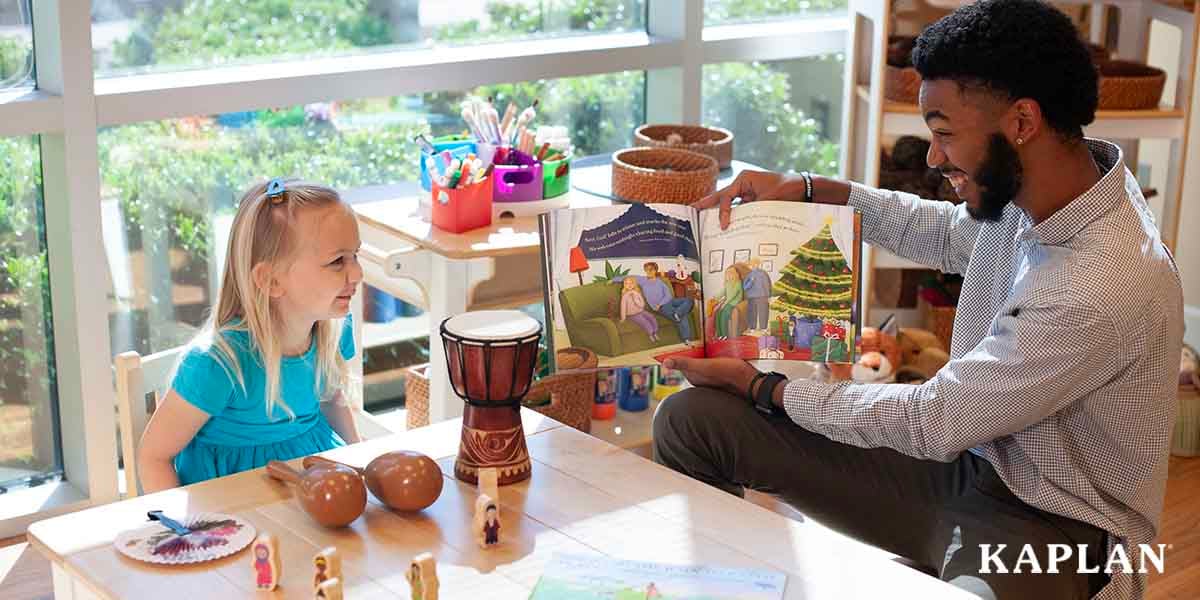Children are eager and ready to learn. However, not all pre-K classrooms foster the educational experiences needed to meet core learning expectations.
Research shows that two out of five children enter kindergarten with one or more risk factors associated with lower school readiness scores. This is why states and school districts develop guidelines and a list of approved curricula for children in the pre-K setting. They want all children to have the best educational experiences possible.
Choosing the right pre-K curriculum for your district is an important task that might arise for many different reasons. It could be that your current curriculum no longer meets the guidelines set forth by your state. It is also possible that you are no longer seeing results with your current curriculum, and you want to see other options that are out there and the results they promise.
No matter your reason for choosing a pre-K curriculum for your district, we are here to help. With our years of experience creating early childhood curricula, Kaplan understands the importance of providing teachers with the necessary tools to turn their classrooms into fun and rich places of learning.
In this article, you’ll learn the six-step process for reviewing your curriculum options, making your decision, and seeking final approval. All so you can provide the best learning experiences possible for every pre-K student in your district.
Step One: Assemble a Curriculum Committee
The task of choosing a pre-K curriculum for an entire district does not need to fall on the shoulders of one person. Instead, you should create a curriculum committee that includes individuals with different perspectives and a wide variety of voices. This will ensure you examine every angle of the curriculum and how it will benefit the education of children in the pre-K classroom before making a final decision.
To incorporate a variety of perspectives when making your decision, create a curriculum committee that includes principals, teachers, parents, literacy coaches, special ed teachers, gym teachers, a curriculum director, etc.

Step Two: Check the Approved Curriculum List for Your State
Before choosing a pre-K curriculum for your district, you will want to check your state guidelines for a list of approved options. Your state creates these lists to provide a standardized set of goals and developmental factors for quality pre-K curricula, which helps educators achieve larger outcomes, such as school readiness scores and social and emotional development.
Step Three: Review the Curriculum and Supporting Materials
When reviewing pre-K curriculum options, your district must consider whether a curriculum will provide the highest quality instruction possible to students. To fully understand the educational qualities of a specific curriculum, it helps to have physical copies or samples of the core materials in hand. This makes it easier to assess how well the curriculum meets the following criteria:
Is the Curriculum Developmentally Appropriate?
You will want to ensure that any lesson plans and supporting materials included in a curriculum are research-based and align with early childhood objectives and teaching standards. There should also be an organized developmental scope and sequence to the lessons so that they support children at different stages of development.
What Supporting Material Does the Curriculum Include?
Some curriculum companies will include educational support kits and web-based games to expand on the lessons and activities. These support materials help teachers meet the educational needs of all children in the classroom, especially those with diverse learning styles, abilities, and interests. If a curriculum does not include support materials, you may need to purchase those items separately.
What Kind of Results Does the Curriculum Have?
Look for research-based data studies that show the types of results you can or should expect when you implement a curriculum with fidelity. Always choose data studies that feature classrooms similar to those in your district. This will help you decide if those results align with the educational goals of your district and the progress you hope children will achieve.
How Teacher-Friendly is the Curriculum Guide?
When reviewing the lessons included in a curriculum, look for those that feature a user-friendly layout that helps teachers deliver the curriculum and meet the learning objectives for each lesson. Sometimes a curriculum will explicitly state objectives on lesson plans, other times there will be a separate guide for teachers to use. Consult with the teachers in your district to better understand the features of a curriculum that make it easy to use and deliver to students.
Do the Lessons Cover More Than One Domain?
When choosing a pre-K curriculum for your district, you want to pick an option that extends a child’s knowledge, understanding of concepts, and skills across all domains. Sometimes you’ll find options that focus heavily on science. Sometimes you’ll find options that focus heavily on literacy. A good pre-K curriculum option for your district should include a balance of literacy instruction, math concepts, science lessons, and social/emotional aspects within each lesson.
Is There a Component to Promote Parent and Family Engagement?
Early childhood teachers and families need to build positive relationships with each other so that they can work together to provide a strong foundation of learning for children. When reviewing curriculum materials, look for activities or parent letter templates that will help teachers communicate with families about their child’s development and classroom progress.
Does the Curriculum Contain Other Features to Support All Learners?
Some teachers will come to a classroom with experience and knowledge that can help them support children of all abilities. Others may need further assistance to support children with differing educational needs. Look for a curriculum option that offers lesson suggestions that will help all teachers work with children who may have varied learning styles, IEPs, special needs, or are dual language learners.
Does the Curriculum Include Implementation Support?
Switching from one curriculum to another can be a challenge for teachers. Choosing a curriculum option that provides professional development and materials to support effective classroom implementation can make this switch easier for your staff. Implementation support can include initial and ongoing training in the form of curriculum resources, in-person training sessions, or the assistance of a curriculum support coach.
Is the Curriculum Within Budget?
Every district has a set budget that may limit what you can spend on things like a new curriculum or supporting materials. Budget may not be a major concern for you, but you will need to decide if the features of a curriculum outweigh any associated costs for your district. A pre-K curriculum can cost anywhere from a few hundred dollars to a few thousand dollars per classroom, depending on the lesson plans, materials, and delivery method.

Step Four: Speak to a Curriculum Company Representative
Once you have done a thorough review of your pre-K curriculum options, it’s time to narrow down your selection. Choose three or four options that are your top choices. Submit a request to have a sales rep from each of those companies come to speak to your district about the features of their curriculum. This will allow you to ask questions and receive additional information that may not be readily available on the company’s website or in the curriculum materials.
Step Five: Look at the Curriculum of Neighboring Districts
Before making your final decision, look at neighboring districts to see which curriculum options they are using and the results their students are seeing. Are those results something you want for your district? Or, do you want something different?
Step Six: Make Your Decision and Present it to Your School Board
Whether that decision falls on you or a curriculum committee, it is finally time to pick a pre-K curriculum for your district. You want everyone making this decision to agree on the final choice.
If you are switching from one curriculum to another, you also want to have teacher buy-in before making this final decision. It can be difficult for teachers to let go of their current curriculum, especially if they feel their students are getting results and the lessons and materials are easy to use. Without allowing teacher voices in the decision-making process, it may be difficult to get them on board when it is time to implement the new curriculum in the classroom.
Once you decide on the best pre-K curriculum for your district, you will need to submit a proposal to your school board for their final approval.
Need Help Choosing a Pre-K Curriculum for Your District?
Choosing a pre-K curriculum for your district is not something you can do in a hurry. In fact, it can take months to weigh your options, make a decision, and finally get approval from your school board. This article should help you feel empowered to begin searching for the best pre-K curriculum for your district.
For years, Kaplan has been providing teachers with the necessary tools to turn their classrooms into fun and rich places of learning. To browse our Kaplan exclusive curriculum options, click here. If you need further assistance choosing a pre-K curriculum for your district, please reach out to a member of our curriculum support team. 

